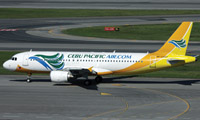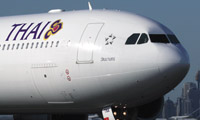Special Report: Social Media
The social media revolution
Today, airlines across the Asia-Pacific are using social networks to reach millions of customers. And, say experts, the likes of Facebook and Twitter are going to play a ‘huge’ role in their success in the future.
March 1st 2013
Air New Zealand (Air NZ) chief executive, Christopher Luxon, says that when it comes to the use of social media networks some airlines still don’t get it. What is more, if they fail to grasp the importance of, say, Facebook or Twitter, they will miss out in a big way, he added. Read More »
 |
| 'As social media strategies become more sophisticated, it is going to evolve into an important - if not the most important - way for the industry to talk to its next generation of customers' |
| Francesco Violante Chief Executive SITA |
“We’re the 45th largest airline in the world, but we are the third biggest on social media. That’s where our customers are. They are sales channels in their own right. If you are not thinking about that, then you have a problem,” said Luxon.
The Air NZ boss said some 22 million Americans have New Zealand on their bucket list, but only 165,000 visit the “Land of the Long White Cloud” annually. That, he added, is a lot of opportunity.
“Where are these customers? Who are they? What messages do they need to hear? What things interest them about the destination? How do they buy their tickets? Let’s get focused about these people. If we can get even a small proportion of them in all the markets we go to, if we can be clever in our customer and sales channel segmentation, we can benefit a great deal,” said Luxon.
“That to me is exciting because it’s within our circle of control. It’s nothing to do with fuel and economics or other operating factors.”
Luxon is not alone in identifying how crucial social networks, which also include Google, Wikipedia, Flickr, YouTube, InstaGram and others, are becoming the future of the airline business. They are no longer just a marketing tool.
Mike Slone, global lead on user experience design at IT major, Amadeus, said social media should be a key component of any business.
“You are missing out on a huge acquisition channel and a huge place to build relationships with customers [without social media]. The risk of not being on social media is quite large. It is something all airlines should be participating in,” he said.
The statistics speak for themselves. Last year, there were more than 600 million social network users in the Asia-Pacific alone, a number expected to soar to 854 million in 2014.
| '[Our social media] conversations are intended to build trust and more relationships and ultimately engender deeper loyalty' |
| Nicholas Ionides Vice-President, Public Affairs Singapore Airlines |
They are only part of the 2.9 billion mobile subscribers in the region, 969 million in the Americas and 741 million in Europe.
Already, social media is being used widely by airlines, including for the promotion of new routes, special ticket price offers, advertising the introduction of new aircraft, inflight services or ground facilities.
They have also been mobilised during crises, such as when flights in Europe were grounded following the eruption of the Icelandic volcano and the subsequent spread of ash. With their call centres swamped by enquiries, airlines informed the public of developments largely through Twitter and Facebook.
Social networks have become critical in reacting to negative publicity. On the one hand, if something goes wrong passengers are quick to spread the news through social networks. On the other hand, airlines are constantly monitoring the networks and can respond rapidly to complaints, offering explanations or apologies to individuals and the wider public.
However, the real potential of social media goes beyond the airline to customer communication channels. Slone said social media is undergoing a critical change that will transform it from a marketing, advertising and information channel into a vital e-commerce tool with the potential to boost profitability of carriers.
The key is social login, also known as social sign-in, a form of single sign-on using existing login information from a social networking service such as Facebook or Twitter to sign into a third party website, such as an airline, in lieu of creating a new login account.
That would be a gateway to increasing social network commerce because it can be used as a mechanism for both authentication and authorization, opening the door to the widespread sale of airline tickets and other ancillary services through social media.
 |
| Cebu Pacific: its Facebook page has more than 700,000 users, its Twitter account more than 400,000 followers and its YouTube channel has had more than one million views. |
“To me that’s the big shift with social media, where IT companies are getting much more involved,” said Slone. “Social media is shifting from being just a PR communications tool to being much more of an integrated piece of e-commerce and IT.
“Essentially, social sign-in can make signing up for an airline account or creating purchase or pre-billing data much easier on the customer.
“In the coming months and years you’re going to see a number, if not all airlines, adopt social sign-in of some sort, whether it’s through Facebook, Twitter or other social networks.”
A handful of airlines are selling tickets through Facebook – Delta in the U.S. was the first and both Malaysia Airlines (MAS) and AirAsia have a Facebook booking facility – but Slone says it remains a basic booking.
Most airlines are keeping a “watching brief” on the use of social networks for selling product. “It hasn’t been adopted so much because the features and functionalities built into the booking engines within Facebook aren’t making it any easier,” said Slone.
“Right now it doesn’t necessarily take away the hassle factor for the customer or make it any easier so they’re not necessarily booking on Facebook as opposed to a normal website or mobile [phone].”
That will change. Social sign-in will become a standard on all websites, including airlines, because it will mean that with a single sign on a customer can move from website to website without having to repeatedly fill in a lot of personal information, including credit card details.
The major benefits from the commercial use of these sites is becoming increasingly apparent. For example, at Christmas, movie and television personalities travelling with British Airways to the Caribbean posted photographs of themselves in holiday mode on social media sites.
 |
| Thai Airways International: has set up its own dedicated social media department |
As a result, the airline’s holiday arm reported that bookings to the Caribbean soared 130%. For the same reason, the carrier also saw a record jump in bookings to Hawaii, up 100% on the previous year.
So what are airlines doing? Consulting firm, Simpliflying, surveyed 29 global carriers active on social media last year and found that more than 75% of them invest more than 90 hours a month on social media, with at least four hours a day dedicated to being online.
Even though nearly half weren’t sure about the return on investment in social media, they still wanted to be part of it. More than 70% of airlines surveyed planned to increase their social media budgets this year.
According to Simpliflying, that’s more than double the number of airlines wanting to grow their social media a year ago. Spending varies for each airline, but 85% of those surveyed had allocated marketing funds – most said 10% of their budget - to social media.
Ilya Gutlin, Asia-Pacific president of IT and communications provider SITA, agreed airlines were starting to allocate specific budgets to social media. SITA enables MAS to sell tickets and also check-in passengers through Facebook.
“That allows them to share the trip with their friends and be able to sit as close as they want to their friends,” said Gutlin.
“AirAsia is quite aggressive on social media. It gives them an advertising channel, a potential sales channel and it does grow revenues.”
He said ticketing through social networks was not yet widespread, but pointed out that passengers tended to convert to new channels quite slowly. “In 2005, demand for self-service check in was muted. People were looking to see who would use it. I believe we are at the same stage with social media,” said Gutlin.
Said SITA chief executive, Francesco Violante: “Our latest IT Trends Survey shows that 90% of airlines intend to promote their services using social media in the next few years. Today, the immediacy of social media is driving improvements to customer service. It can be provided at a lower cost than some other channels, such as call centres.
“As social media strategies mature and become more sophisticated, it is going to evolve into an important - if not the most important - way for the industry to talk to its next generation of customers.”
A straw poll of airlines across the Asia-Pacific clearly showed all were taking social media seriously.
They have a Facebook and Twitter presence and most have made social networking a firm part of their budgeting. There was, however, a large variance in the number of staff dedicated to handling it. There was also some divergence of opinion in terms of how social media could be developed into a money-making element of the business.
Nicholas Ionides, Singapore Airlines vice-president for public affairs, said the carrier’s social media customer engagement was spearheaded by head office under the public affairs department. It was supported by a global team, mainly from PR and marketing roles, who worked closely with the customer affairs department, contact centres and other relevant departments.
“This enables us to have 24/7 coverage through our social media channels. It is not possible to put a definitive figure on the number of people who are involved in social media activities, however, as all team members have other duties as well,” said Ionides.
Cathay Pacific Airways said it used Facebook and Twitter differently, but aimed to achieve the same goal; increasing brand engagement and loyalty building.
“Facebook is more for engagement on branding, campaigns and discussion generation to build bonding with the community and within the community,” said a spokesperson.
“For Twitter, it is more for information sharing, handling customer enquiries within a shorter timeframe.”
Cathay has a dedicated social networking team at head office and in various overseas offices. “Facebook and Twitter are some of the growing channels that our customers are spending more time on and so are we,” said the spokesperson.
Qantas Airways has a “small dedicated team” that manages the airline’s social media presence across Twitter, Facebook, YouTube, LinkedIn and Instagram, said a spokesperson.
“This includes representatives from our key stakeholder groups; corporate communications, marketing, commercial, frequent flyer, customer care and online. With such a large number of our customers expecting more from us online, social media has become an increasingly important strategic focus at Qantas,” she said.
“We understand the value of communicating via a range of mediums. Social media allows us to engage with a range of audiences and rapidly share information - news, images, audio, video, and other multimedia content - with customers and media.
“We use social media to assist our customers where we can with general queries. If the issue is more serious, we then triage these customers to our dedicated social media customer care team or to reservations for assistance.”
Said SIA’s Ionides: “We see an increasing number of customers engaging with us through our Facebook page and Twitter, be it for assistance with their travel or to share feedback with us.
“These conversations are intended to build trust and more relationships and ultimately engender deeper loyalty.”
Royal Brunei Airlines (RBA) recently announced a one-year partnership with SimpliFlying to provide strategic consulting for its customer engagement, marketing and social media strategy.
“Our partnership is a measure of our determination to be at the ‘cutting edge’ of this technology.” said RBA’s deputy chairman, Dermot Mannion.
Thai Airways International (THAI) has set up its own dedicated social media department to meet demand. Last year, it organized a three-day airline social media strategy training course in conjunction with the International Airline Training Fund to help improve THAI’s social media communication efficiency.
Malaysia’s low-cost carrier, AirAsia, is regarded as a leader in the use of social media. It has pushed the envelope for driving key business goals through the medium, handling customer service through AskAirAsia, launching new routes through Chinese social networks and driving revenue through significant sales on Facebook. It was the first carrier outside the U.S. to sign up a million followers.
Another of the region’s budget operators, Cebu Pacific in the Philippines, was named the second most “socially devoted brand” in the airline industry last November by Socialbakers, a social media analytics company. Top of the list was KLM Royal Dutch Airlines.
“This recognition fuels our drive to further engage our passengers online, especially when it comes to seat sales, enquiries, weather updates, product innovations and new routes and destinations,” said Cebu’s vice-president for marketing and distribution Candice Iyog.
Cebu Pacific’s Facebook page has more than 700,000 fans, its Twitter account has more than 400,000 followers and its YouTube channel has had more than one million views.
Experts believe there is a need for dedicated social media staff. “You need to have someone who has ownership of social media. As social media has matured there’s a certain skill set needed to run and develop programs,” said Amadeus’ Slone. “Typically, it’s becoming a more specialized group focusing on social media.”
Gutlin agreed. “If you talk to the airlines that have done it part-time usually it didn’t work out. You have got to have someone looking through social media on a daily basis to see what passengers are saying about you,” he said.
“If you have a negative message out there you cannot let that message go. If you’ve got a positive message you need to amplify it.”
Amadeus’ Slone said there is another advantage. “The good thing about social media is that everything is digital. Because it is digital almost everything can be tracked,” he said.
“Sophistications of analytic programs aid and prove the worth of social media. Programs can be put in place to track exactly how many customers you are acquiring, how many customers are sharing your content, how many customers are booking or coming to your website because of social media or social influence as people are sharing photos and influencing friends. All of that can be tracked in a way that, when done effectively, will show that social media is a great investment.”